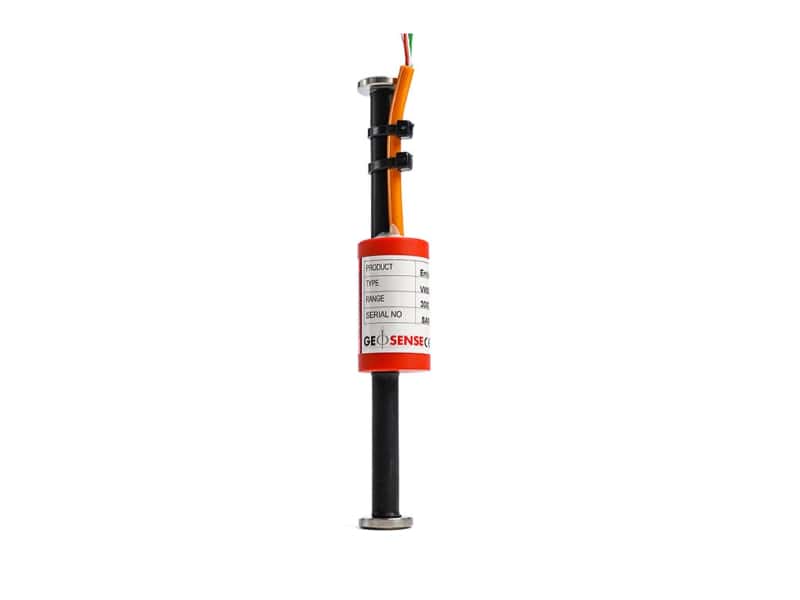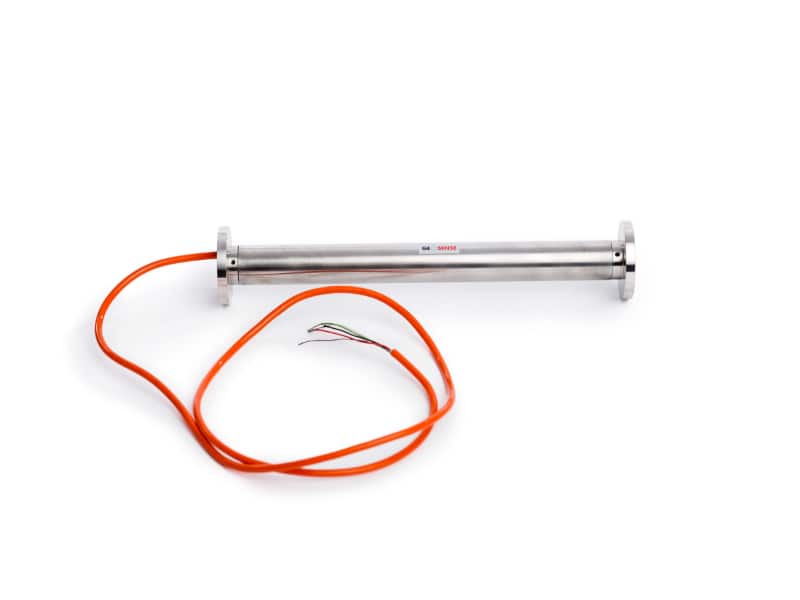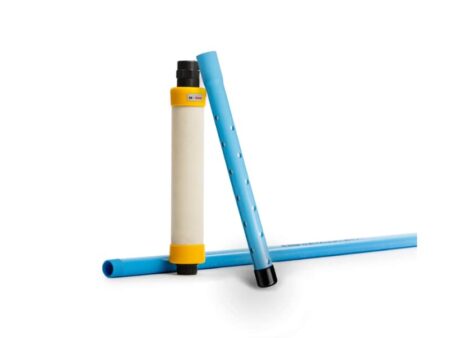Descriptions
Deformation within the concrete will cause the two end blocks will move relative to each other. The tension in the wire between the blocks will change accordingly thus altering the resonant frequency of the wire.
VWS-2125 can be used within mass concrete with coarse aggregates as its heavy duty construction resists bending and the large end flanges provide a high contact area.
Case Studies
Barton-on-Sea Cliffs
New Forest District Council in Hampshire commissioned investigation and monitoring works at the seaside cliffs of Barton-on-Sea, an area known for its problems with coastal erosion.
A site investigation was required to develop the ground model, cliff-stability assessment, risk assessment and the design of a site-instability management plan. Engineered schemes to mitigate the risks associated with the ongoing coastal cliff instability were also being considered.
The aims of the investigation generally related to the detailed logging and classification of samples and materials recovered from the boreholes, including the description and identification of common fossil fauna and of any potential failure surfaces.
The engineer to the contract (CH2M Hill) was responsible for designing the investigation to supplement and complement data from the numerous previous phases of work.
Barton-on-Sea Cliffs Case Study
Parallel Roads
The project comprises two parallel roads, each 64km long, stretching between Sheik Rashid Road (near Zabeel Park) and the outskirts of Abu Dhabi in the United Arab Emirates.
These roads will ease traffic flow on Sheik Zayed road and provide easy connections between various communities and developing residential and commercial areas between the two highways.
They consist of three-lane roads in each direction with a number of flyovers and interchanges.
As part of the elevated sections a significant amount of 800mm bored cast in-situ piles were constructed as part of the bridge piers.
The total capacity of the two roads will be 18,000 vehicles per hour and the project is divided into nine phases.
Parallel Roads Case Study
Museum of Human Evolution
Work on the site began in 2004 and The Museum of Human Evolution was inaugurated on July 13, 2010. Its foundation is based on the archeological site of Atapuerca, located 20 km (12 miles) east of Burgos. The Atapuerca site has been designated a UNESCO World Heritage Site.
The specialist geotechnical company KellerTerra were contracted to construct the deep foundations which would be used to support the structure and for underground parking and the lower levels of the museum.
Part of this deep foundation required the construction of a diaphragm wall to a depth of approximately 20 metres.
Museum of Human Evolution Case Study












